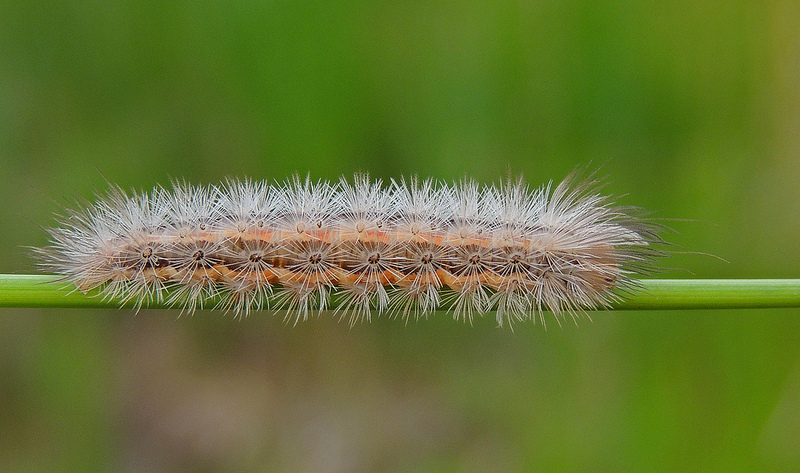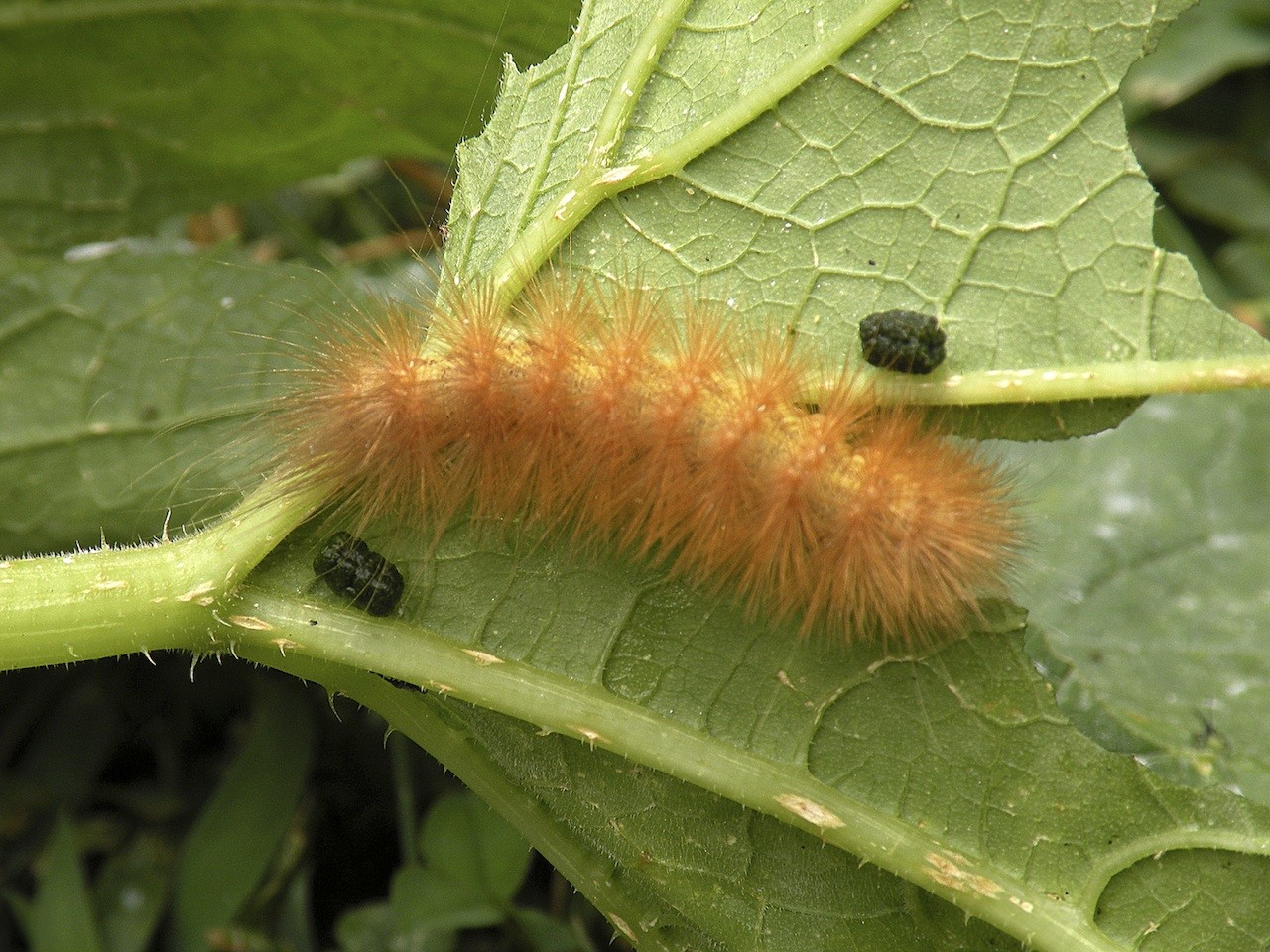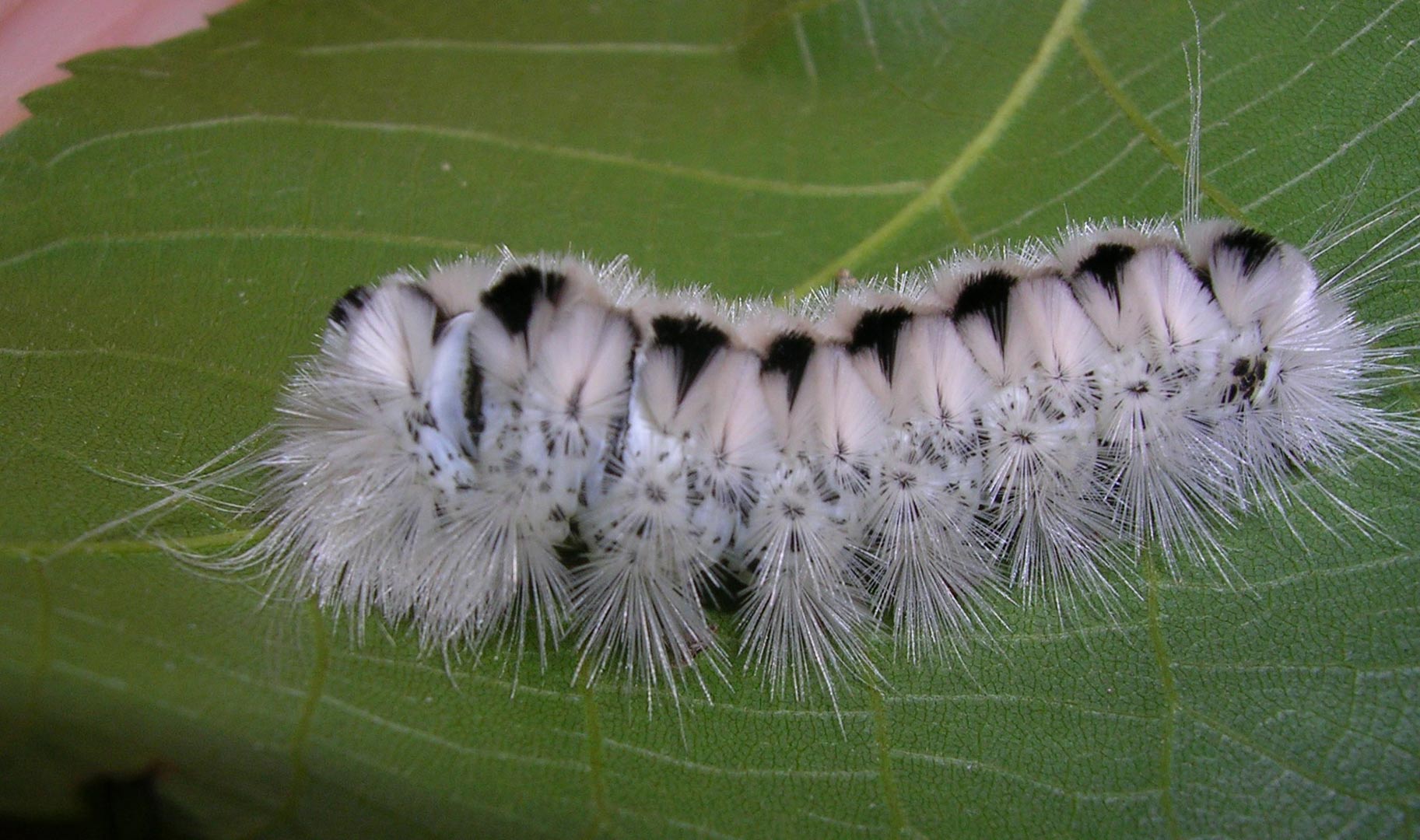Caterpillars are the larval stage of butterflies and moths, and they come in a variety of shapes, sizes, and colors. Some caterpillars are known for their white coloration, which can be seen throughout their growth stages or only in a particular instar.
White caterpillars can be found on the underside of leaves of host plants and trees, and they can be diurnal or nocturnal. In this article, we will take a closer look at five types of white caterpillars found in the US and Canada.
You are reading: 5 Types Of White Caterpillars

5 Types Of White Caterpillars
Yellow Bear Caterpillar (Spilosoma virginica)

The Yellow Bear Caterpillar, also known as the Yellow Woolly Bear, is the larval stage of the Spilosoma virginica moth. This species of moth belongs to the Arctiinae subfamily and is commonly found in the United States and Canada.
As a caterpillar, it is known for its yellow and white hair-covered body, which can vary in color but is typically consistent in a single specimen.
The caterpillar feeds on a wide range of low-growing plants, including grass and clover, and is a defoliator, skeletonizing the leaves it feeds on.
The Yellow Bear Caterpillar can be seen during the warm summer months and the fall before it overwinters. As an adult, the Spilosoma virginica moth is known as the Virginian Tiger Moth.
Sycamore Tussock Moth Caterpillar (Halysidota harrisii)
The Sycamore Tussock Moth Caterpillar, also known as the Sycamore Tiger Moth, is the larval stage of the Halysidota harrisii moth. This species of moth belongs to the Arctiini tribe and is commonly found in southeastern Canada, the eastern parts of the United States, and northeastern Mexico.
Read more : The 15 Lizard Species You Should Know
The caterpillar is covered in white hairs and has black tufts of hair on its back. It has orange heads and four orange tufts. The caterpillar feeds on the American sycamore tree, Platanus occidentalis, and can be seen during the summer months.
The Sycamore Tussock Moth Caterpillar overwinters as cocoons, and adults emerge in May and June to lay eggs on the underside of leaves or bark of sycamore trees.
The young larvae feed in groups and scatter as they grow. It is important to note that the Sycamore Tussock Moth Caterpillar has stinging spines and may irritate the skin if handled.
Hickory Tussock Moth Caterpillar (Lophocampa caryae)

The Hickory Tussock Moth Caterpillar, also known as the Hickory Tiger Moth or Hickory Halisidota, is the larval stage of the Lophocampa caryae moth.
This species of moth belongs to the Erebidae family and the Arctiini tribe, the tiger moths. The caterpillar is covered in white hairs with a line of black hairy tufts. It has venom-filled spines that can cause a rash, so it is best to avoid handling them.
The caterpillar feeds on the leaves of ash, oak, hickory, maple, elm, and other trees. The Hickory Tussock Moth Caterpillar can be seen during the summer months, and the adult moth flies in May and June. The eggs are laid on the underside of leaves in clusters of up to 100 or more, and the young larvae feed gregariously on one or a few closely associated leaves.
The later-instar caterpillars are seen between July to September and become more solitary and feed singly or in small groups.
Spotted Apatelodes Caterpillar (Apatelodes torrefacta)
The Spotted Apatelodes Caterpillar is the larval stage of the Apatelodes torrefacta moth. This species of moth belongs to the Apatelodidae family and is commonly found in North America, from Maine and southern Ontario to Florida, west to Texas, and north to Wisconsin.
Read more : 8 Types Of Bears
The caterpillar has a yellow body with black spots and long black hairs. It feeds on the leaves of Fraxinus, Prunus, Acer, and Quercus species. The Spotted Apatelodes Caterpillar can be seen during the summer months, and the adult moth flies from May to August.
The wingspan of the moth is 32-42 mm, and the forewing is gray with brown lines and shading, with a dark patch near the base. The caterpillar has stinging spines and may cause an itchy, irritating rash if handled.
Cisseps Fulvicollis Caterpillar
Cisseps fulvicollis, also known as the Yellow-collared Scape Moth, is a species of moth in the family Erebidae and subfamily Arctiinae.
Here are some key facts about the Cisseps fulvicollis caterpillar:
– The caterpillar is yellow, brown, or black with sparse long, soft, pale setae.
– It has dark stripes on its back and sides surrounded by yellow or orange stripes.
– The larvae feed on grasses, lichens, and spike-rushes (Eleocharis spp.).
– The caterpillar is nocturnal and spends the winter as half-grown larvae.
– The adult moth is known for its iridescent multicolored scales on the wings and the iridescent blue-black body.
The Yellow-collared Scape Moth is widespread in North America, including the southeastern US, where the Virginia ctenucha (Ctenucha virginica) is absent. The moth is active during late spring and summer in fields and forest edges throughout Canada south to Texas and Florida.
FAQS
1. Are white caterpillars dangerous?
Some white caterpillars, such as the Hickory Tussock Moth Caterpillar, have stinging spines that can cause a rash if handled. It is best to avoid handling them.
2. What do white caterpillars eat?
White caterpillars can feed on a variety of host plants and trees, including grass, clover, sycamore, hickory, oak, ash, maple, elm, and others.
3. When can I see white caterpillars?
White caterpillars can be seen during the summer months and the fall before they overwinter. The adult moths can be seen in the spring and summer.
4. Where can I find white caterpillars?
White caterpillars can be found on the underside of leaves of host plants and trees. They are commonly found in fields, forest edges, and gardens.
5. How can I identify a white caterpillar?
White caterpillars can vary in appearance, but they are typically covered in white hairs or setae. Some have black tufts of hair on their back, while others have black spots or stripes. It is best to consult a field guide or expert for proper identification.
Source: https://petstutorial.com
Category: Animals










